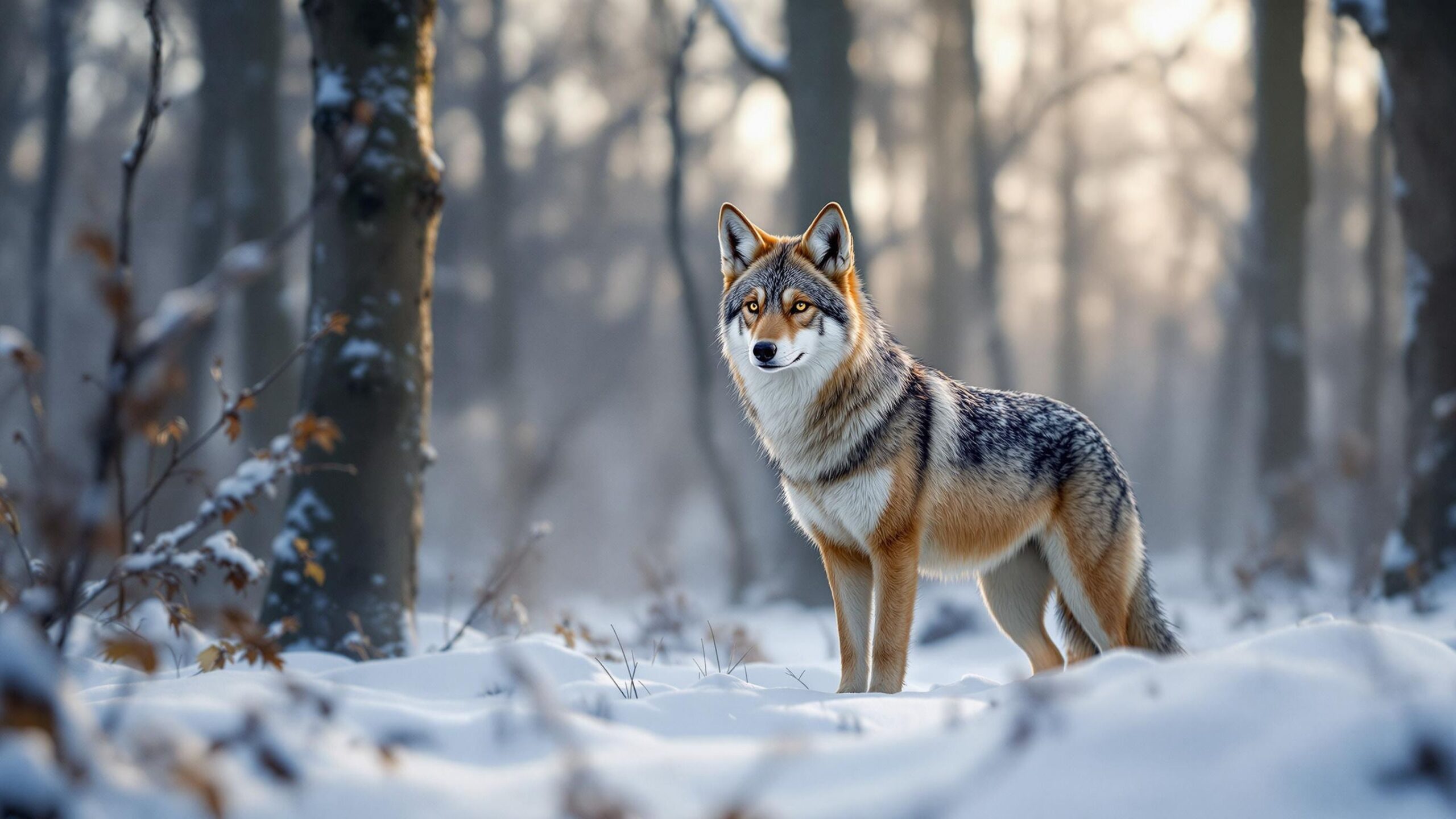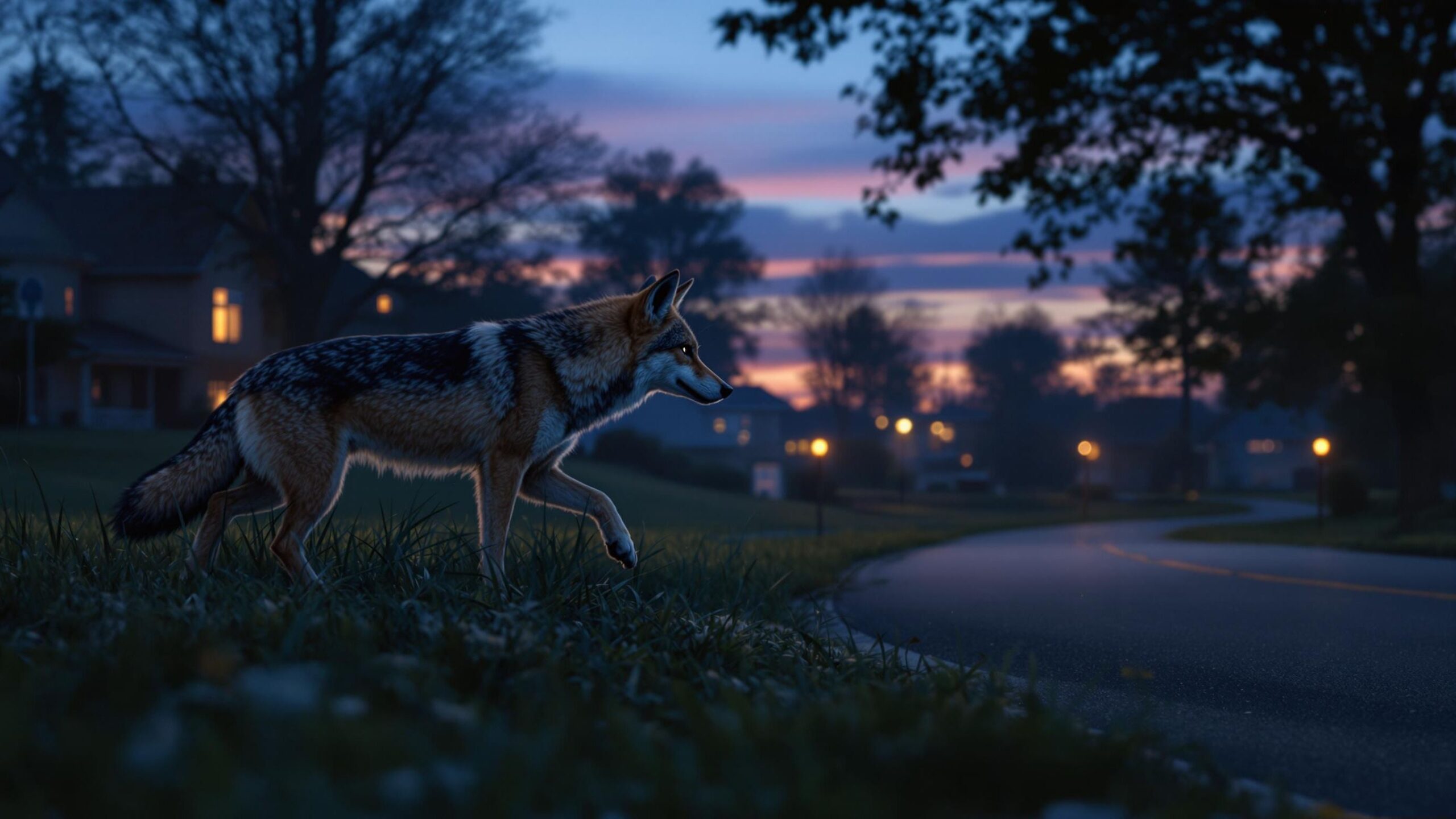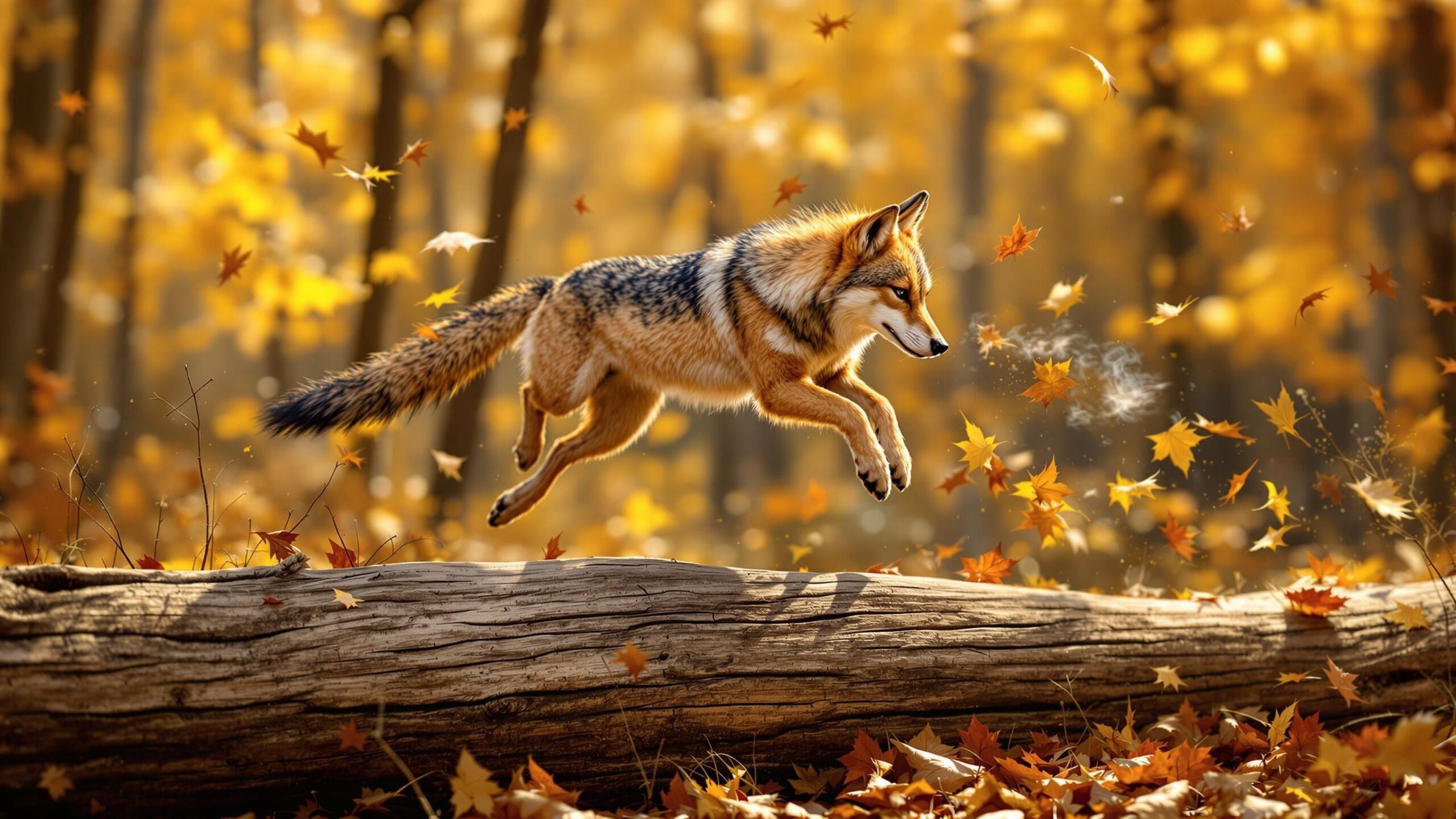Eastern Coyote: The Adaptive Predator of the East
Scientific Name: Canis latrans var.
In the forests, fields, and even the suburban sprawl of eastern North America, a quiet and clever predator has staked its claim. The Eastern Coyote, Canis latrans var., is a creature of resilience, intelligence, and controversy. Neither fully wolf nor purely coyote, this hybrid species has adapted remarkably to landscapes shaped by human activity, thriving in places where larger carnivores have long vanished. With a haunting howl, watchful eyes, and a ghost-like presence, the Eastern Coyote embodies the wild spirit of adaptation in a changing world.
As a relative newcomer to the East, the Eastern Coyote has not only established itself as a top predator but has also captured the curiosity of biologists, ecologists, and the public. It is an animal that tells a story of movement, evolution, and survival, all unfolding right in our backyards.
Origins and Evolution: A Hybrid Born of Necessity
The story of the Eastern Coyote begins with the westward expansion of European settlers. As gray wolves were exterminated from much of eastern North America in the 19th and early 20th centuries, the ecological void they left behind slowly drew in coyotes from the West. Originally native to the central plains and deserts, the Western Coyote (Canis latrans) began moving eastward as forests were cleared and wolf populations declined.
However, as these western coyotes crossed into the Great Lakes and parts of Canada, they encountered remnants of wolf populations—especially eastern wolves and, to a lesser extent, gray wolves. The result was interbreeding between species that once rarely shared territory. This hybridization produced a larger, stronger, and more adaptable version of the coyote: the Eastern Coyote. Genetic studies have shown that the Eastern Coyote is a unique mixture, comprising mostly coyote DNA with notable contributions from eastern wolves, gray wolves, and even a touch of domestic dog. This genetic blend has given rise to a new kind of predator, one capable of exploiting a broader range of habitats and prey than its ancestors.
Physical Characteristics: Bigger, Stronger, Wiser
The Eastern Coyote is noticeably larger than its western counterpart. Adults typically weigh between 30 and 50 pounds, with some individuals exceeding 60 pounds. They stand taller and have broader skulls and more muscular builds, thanks in part to their wolf ancestry. Their coats are generally tawny gray or reddish-brown, flecked with black and white, and often resemble the colors of the Eastern forest floor. The bushy tail, carried low, and pointed ears give them a distinctly wild appearance. Their eyes are sharp and intense, reflecting the keen alertness of an animal that is constantly observing its surroundings. One of the most striking traits of the Eastern Coyote is its versatility. From urban alleyways to deep woods, it has adapted both behaviorally and physically to a variety of environments. This adaptability is a major reason behind the species’ widespread success across the Northeast, Mid-Atlantic, and even into parts of the South.
Behavior and Intelligence: The Clever Canine
Coyotes are renowned for their intelligence and resourcefulness, and the Eastern Coyote is no exception. These canids are opportunistic omnivores, capable of adjusting their hunting strategies based on location, season, and available prey. In rural areas, they may feed on deer, rabbits, and rodents. In urban settings, they scavenge from trash cans, eat fruit from trees, and prey on small pets or urban wildlife like squirrels and pigeons. They are primarily nocturnal, especially in human-dominated landscapes, but in more remote areas, they may be active during daylight hours. Eastern Coyotes use a variety of vocalizations to communicate, including barks, yips, and their famous high-pitched howls. These vocalizations are used to maintain territory, coordinate among pack members, and communicate with nearby coyotes.
Socially, Eastern Coyotes form loose family groups rather than tightly structured wolf-like packs. A typical group consists of a monogamous breeding pair and their offspring from previous years. These groups cooperate in rearing pups and defending territory, though hunting is often a solitary or duo effort. Their intelligence is evident in their ability to learn from their environment. They quickly identify food sources, adapt to new hazards, and alter behavior to avoid threats such as roads, traps, or human encounters.
Range and Habitat: A Master of Many Landscapes
One of the most remarkable aspects of the Eastern Coyote is its ability to thrive in vastly different environments. Its range stretches from the eastern provinces of Canada—including Ontario, Quebec, and Nova Scotia—down through New England, New York, the Mid-Atlantic states, and as far south as North Carolina and even Georgia.
Unlike many predators, which struggle to survive in fragmented or urbanized habitats, the Eastern Coyote flourishes. Suburbs, parks, farmland, forests, and even city centers offer refuge and food. Coyotes have been recorded in Central Park in New York City, the outskirts of Boston, and suburban developments across the eastern United States. Their adaptability allows them to maintain territories that can vary from just a few square miles in urban zones to over 20 square miles in rural areas. Despite being highly mobile, Eastern Coyotes tend to remain within familiar ranges unless pushed by competition or food scarcity.

Diet and Hunting Tactics: A Flexible Feeder
The Eastern Coyote’s diet is as varied as its habitat. As omnivores, they consume both animal and plant matter, adjusting their feeding habits to whatever is most available. Small mammals such as mice, voles, rabbits, and squirrels are staples. In agricultural areas, they may consume crops like corn or scavenge livestock remains. In urban environments, they eat garbage, birdseed, and fruit from ornamental trees.
One of the most fascinating aspects of their ecology is their interaction with white-tailed deer. During harsh winters, when deer are weakened or struggling through snow, coyotes can be effective predators, especially when hunting fawns or injured adults. While they are not the primary population control for deer, they play a useful ecological role in maintaining balance, particularly in areas with overabundant deer populations. Coyotes employ both stealth and speed in their hunting. They may stalk quietly before pouncing or engage in short chases. Sometimes, mated pairs or small groups coordinate hunts, particularly when targeting larger prey. They are also known to cache food for later use.
Reproduction and Family Life: Raising the Next Generation
Mating season for Eastern Coyotes typically occurs from January to March, with pups born in the spring. After a gestation period of around 63 days, the female gives birth in a den—usually in a secluded spot such as a burrow, hollow log, or brush pile. Litter sizes vary, but generally consist of four to seven pups.
Coyotes are dedicated parents. Both the male and female participate in raising the young, and older offspring often help care for the new litter. Pups are weaned at about five to seven weeks and begin accompanying adults on short forays shortly after. Family units usually stay together until the fall, when most pups disperse to establish their own territories. However, some may remain with the group for longer, especially if food is plentiful. Dispersal distances vary but can be significant—some juveniles have been known to travel over 100 miles in search of new territory.
Interactions with Humans: Coexistence and Conflict
As their range expands into human-dominated areas, Eastern Coyotes are increasingly coming into contact with people. For the most part, they are shy and avoid confrontation. Still, as opportunists, they sometimes come into conflict with humans—especially when food is easily available.
Incidents of coyotes attacking pets, particularly unattended small dogs or outdoor cats, have drawn media attention and stirred public concern. However, attacks on humans are extremely rare. Most problems arise when coyotes become habituated to people, often due to intentional or unintentional feeding. Education is key to coexistence. By securing garbage, supervising pets, and removing food attractants like fallen fruit or birdseed, people can significantly reduce coyote-human conflicts. Programs in urban centers like Chicago and Boston have shown that public awareness and responsible behavior can allow coyotes and humans to coexist with minimal trouble.
Ecology and Role in the Environment: Balancing the Ecosystem
The Eastern Coyote fills an important ecological niche. In regions where apex predators such as wolves and cougars have been eliminated, coyotes have stepped into the role of mesopredator—a middle-tier predator that keeps populations of smaller animals in check.
They help regulate rodent populations, reduce carrion, and indirectly benefit plant growth by managing herbivore numbers. Their predation on fawns also has a subtle but meaningful impact on deer population dynamics, which in turn influences forest regeneration and biodiversity. Because of their hybrid nature, some biologists argue that the Eastern Coyote represents an example of adaptive evolution in action—a species not only surviving but flourishing in a human-altered world. This perspective casts the Eastern Coyote not as a pest, but as a necessary player in the 21st-century ecological drama.
Conservation and Management: Striking a Balance
The Eastern Coyote is not considered endangered or threatened. In fact, its population is stable and likely increasing in some areas. Nevertheless, the species is subject to intense management and hunting pressure. In many states and provinces, coyotes can be hunted year-round with few restrictions.
This approach stems from their reputation as livestock predators and competitors with hunters for deer. However, studies show that indiscriminate hunting often fails to reduce overall populations and may even encourage increased reproduction. Coyotes compensate for population losses by breeding earlier, having larger litters, or expanding into vacant territory. Some wildlife agencies are now promoting non-lethal coexistence strategies. These include livestock guardian animals, better fencing, and public education. As science continues to reveal the ecological value of coyotes, more communities are rethinking how to manage their presence.

A Predator for the Anthropocene
The Eastern Coyote is an animal of the Anthropocene—our current geological age shaped by human activity. Its very existence is the result of ecological change, species displacement, and hybrid vigor. Rather than fade in the face of modernity, it has found a way to thrive, becoming one of the most successful wild mammals in eastern North America. It challenges old assumptions about what a wild animal looks like, where it belongs, and how it interacts with the world around it. It is a reminder that nature does not always recede in the face of human progress—sometimes, it adapts, evolves, and sings a new song in the darkened woods behind our homes.
Wild Resilience
In the twilight hours, when the last light slips through the trees and the world grows quiet, a sharp, rising howl may pierce the stillness. It is the voice of the Eastern Coyote—adaptable, resilient, and uniquely suited to the modern world. It asks us not for fear, but for understanding. It calls us to recognize that the wild still lives among us—not in distant wildernesses, but right here, on the edge of town.

